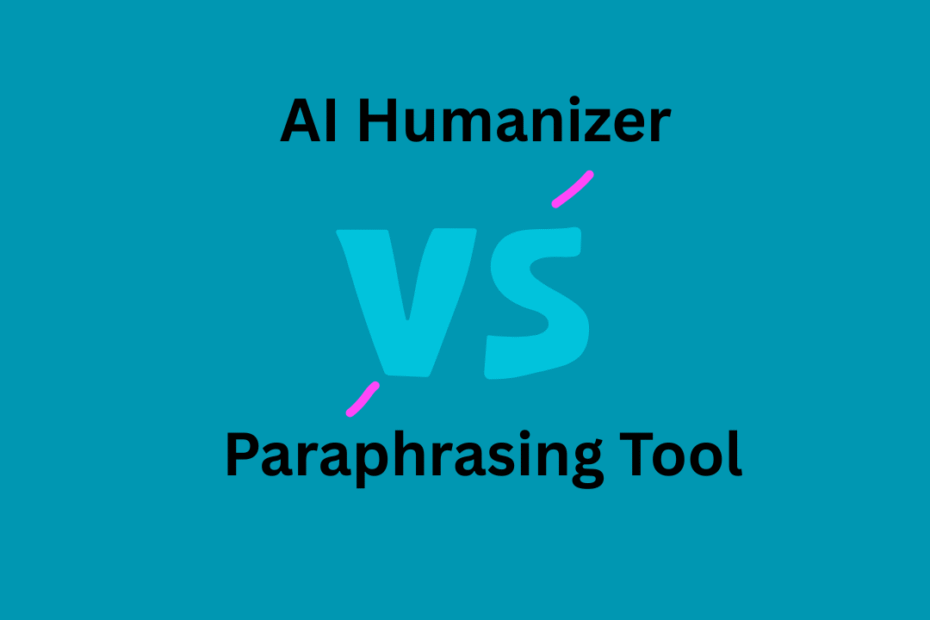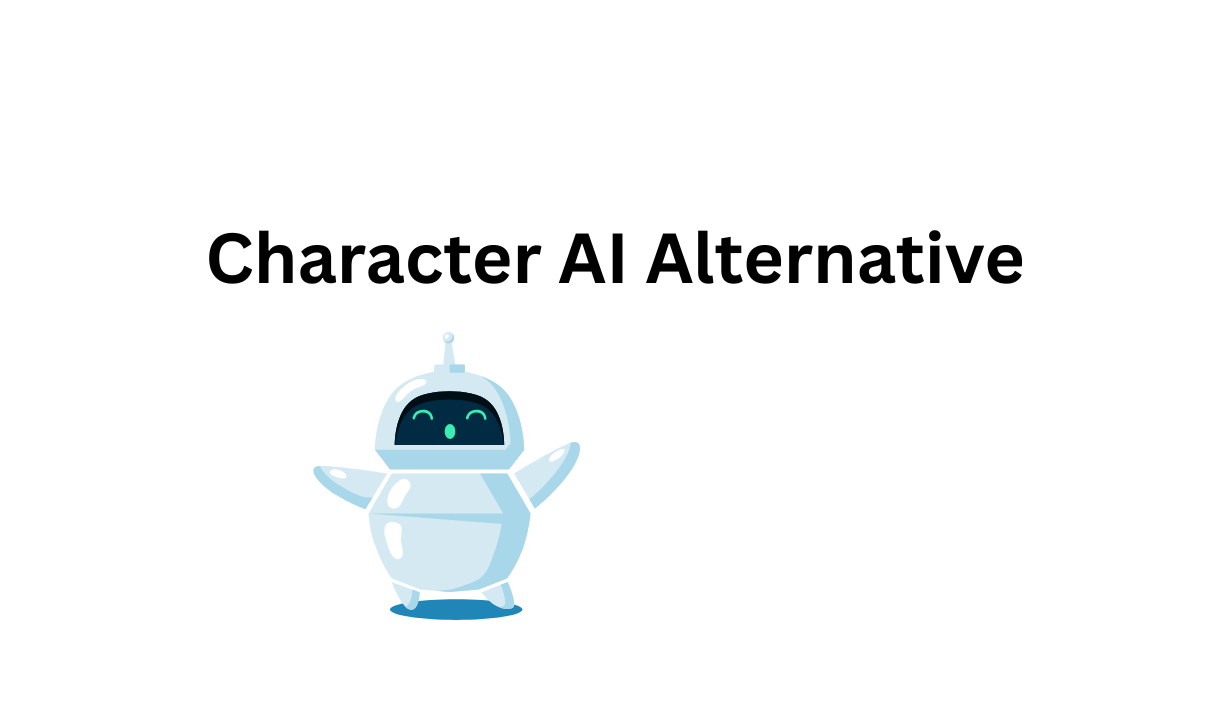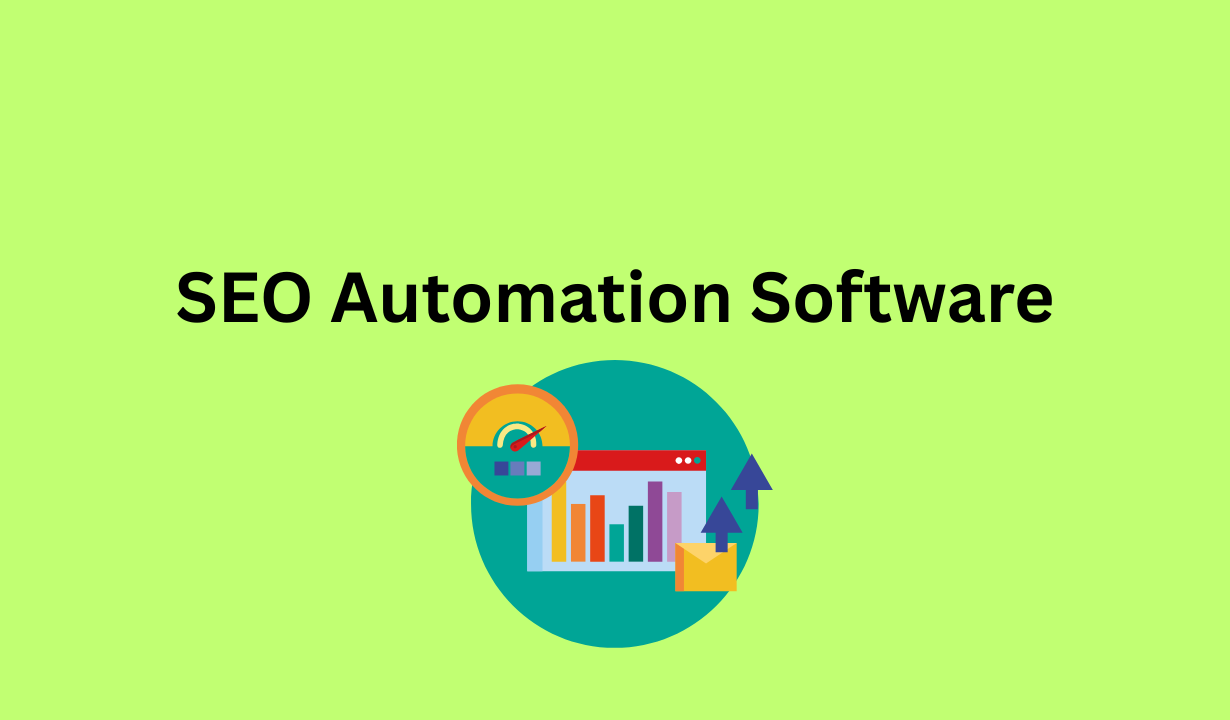AI Humanizer vs Paraphrasing Tool: the AI humanizer translates AI-authored text in a way that makes it sound natural, so that it will be able to pass AI detection tools, whereas a paraphrasing tool simply rewrites any text – swapping out words and flipping sentence constructions – in order to create new versions.
What’s the distinction? AI humanizers try to avoid AI detection while preserving meaning; paraphrasers just try to do wholesale rewriting that can totally disrupt meaning and will not fool AI detectors as well.
If you want to preserve the message and quality in the original text, while trying not to be caught as cheating, you should opt for AI humanizers. Paraphrasing tools, however, are intended more to rewrite existing human written stuff for the purpose of avoiding plagiarism, or creating a few different versions for multiple uses.
Having this information allows you to choose the proper tool for the position, be that position in school, work, or something else entirely.
Best AI Humanizer Tools-My Ultimate List
Ai Humanizer vs Paraphrasing Tool-Quick Overview
| Aspect | AI Humanizer | Paraphrasing Tool |
|---|---|---|
| Primary Purpose | Makes AI-generated or robotic text sound more natural, human-like, and emotionally engaging. | Rewrites text to avoid duplication or plagiarism while keeping the original meaning intact. |
| Focus | Human tone, flow, and natural expression. | Word and sentence structure variation. |
| Depth of Rewriting | Deep — adjusts tone, rhythm, and semantics to mimic human writing style. | Surface-level — changes words, phrases, and sentence order. |
| Use Case | Final polishing of AI-generated or formal content to make it sound authentic. | Rewriting existing content for originality or SEO purposes. |
| Output Style | Conversational, natural, and context-aware. | Neutral, sometimes mechanical, depending on the algorithm. |
| AI Detection Evasion | Often optimized to reduce AI detectability by making text appear human-written. | May still be flagged as AI-generated if not deeply restructured. |
| Grammar & Clarity | Enhances readability, tone, and flow beyond grammar correction. | Focuses mainly on grammar and synonym substitution. |
| Creativity Level | High — can adapt writing style, tone, and even cultural nuance. | Moderate — maintains meaning but rarely adds stylistic depth. |
| Best For | Content creators, marketers, and writers who want authentic, human-like text. | Students, researchers, and SEO writers who need unique but factually consistent text. |
Understanding AI Humanizers vs Paraphrasing Tools
AI humanizers and paraphrasing tools are working with text in their own particular, and various, ways depending on what you are trying to do . One is concerned with making the AI-generated stuff sound natural and undetectable; the other just rewrites text to paraphrase the words and sentences.
They all serve a distinct purpose, depending on how/where your content originates and what you want to do with it.
What Is an AI Humanizer?
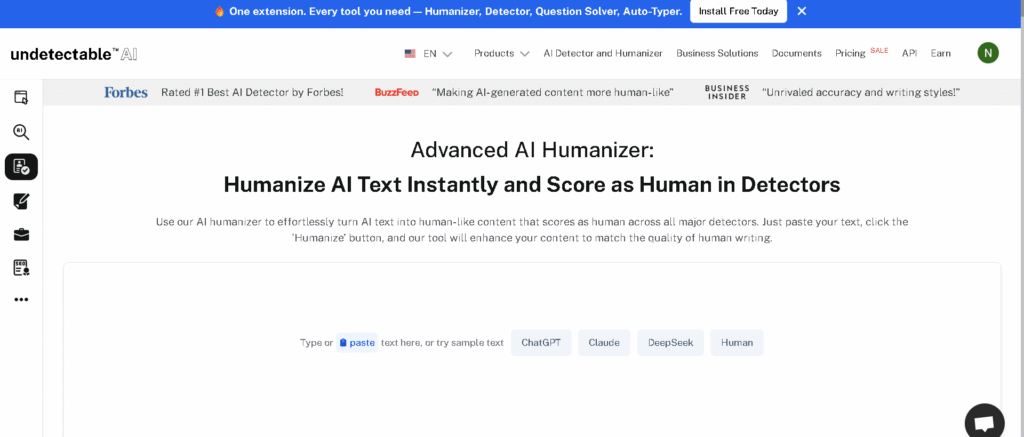
In other words, an AI humanizer looks at AI- generated text and makes it “sound” more like it was written by a human. This scans for the fingerprints of A.I. models, the sort of things that detection tools like to find.
It change the phrasing and wording of sentences, but attempts to keep the overall meaning of the original sentence. Its primary function? Assist AI-generated content in slipping by AI detection software in schools, businesses, and publishing.
It makes an effort to maintain the quality and spirit of the writing, even though at the expense of clarity. You need the latter two if you are submitting AI-assisted academic papers or professional work that are meant to appear genuinely human.
What Is a Paraphrasing Tool?
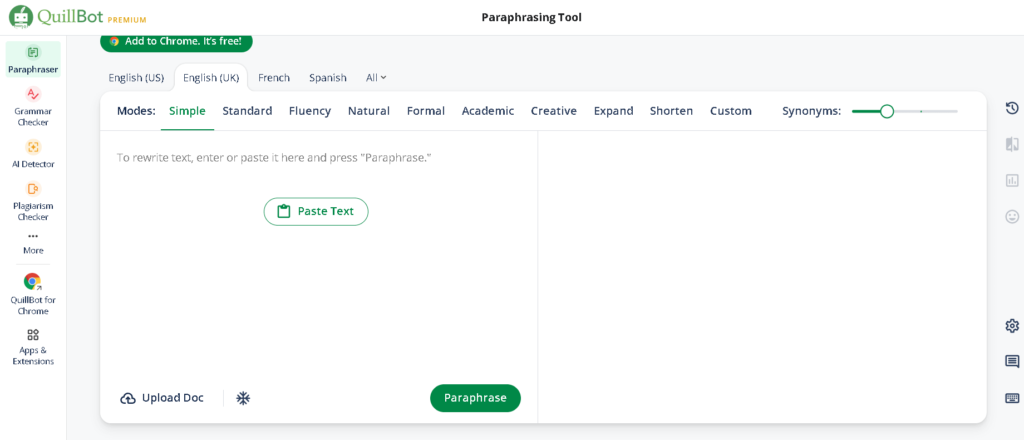
A paraphrasing tool essentially replaces words and rephrases sentence structure. It will operate on any writing, coming from human or Ai originally.
Its primary function is to produce distinct versions that can be useful in avoiding plagiarism, simplifying or altering the tone of the text. It largely replaces words with synonyms and rearranges sentences.
It has no preference for the types of AI patterns detectors are searching for, and thus may interfere with the intended meaning or produce spotty quality. Paraphrasers are good for general rewriting tasks and not sneaking past AI’s.
Core Purposes and Typical Use Cases
| Primary Use | Central Intention: | Use Case Examples |
|---|---|---|
| AI Humanizer . | Meaning preserved; Stealth AI bypassed | Academic articles, SEO articles, Professional AI content |
| Paraphraser | Rewrite existing and new content | Plagiarism, content recycling, changing the tone |
The AI humanizers really excel when you need AI- generated text to sound human and to pass detection tools such as Turnitin or GPTZero. They’re what you use when you can’t afford to lose authenticity or meaning.
Paraphrasing tools, on the other hand, are purely about are simply general rewriting for clarity, avoiding plagiarism, and spinning multiple versions of the same comment. They do not guarantee to defeat AI detectors and may alter the meaning more than you would like.
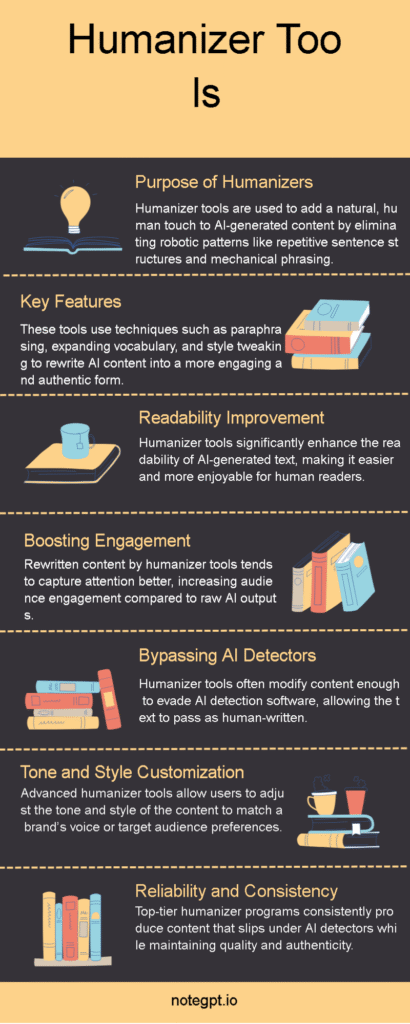
How AI Humanizers Work
AI humanizers employ sophisticated gimmicks to make machine-written text feel authentically human. It is not just lifting out words – they are using an analysis of language patterns and tone as contextualizing devices.
They pull a lot of their magic from machine learning and natural language processing. It’s a little more complex than simply throwing it into a thesaurus.
Machine Learning and Natural Language Processing
AI humanizers, meanwhile, resort to using machine learning to identify the standard patterns in text generated by AI. They examine how alternatives such as ChatGPT and Claude create sentences and select for words .
They then apply natural language processing (NLP) techniques to “humanize it”-offer a more human language meaning without dropping the intended meaning of the text. These are the formulas that set off the AI’s alarm system, and which they then must hunt down and and replace with a more natural phrasing.
The tool practices on vast amounts of data, so it has learned not to be overly embarrassed to sound as human as possible. What’s the goal? Legible text that is not mechanical or dumbed-down.
Contextual Understanding and Tone Adaptation
What does distinguish AI humanizers is that they can actually understand context and modify tone. This is not just a matter of making word substitutions; they reconfigure sentences to make them apply to the particular circumstance at hand, whether that circumstance is academic materials or marketing information.
They can make the writing scam formal, inform al, persuasive, or anything else. The tool retains the message while dumping the cookie cutter sound by following the context. It becomes more interesting this way, and is at least some of the time believable.
Popular AI Humanizer Tools
Here are a few AI humanizer tools that are prepared to deal well with AI-generated content. Some examples are WriteHybrid, EsasayDone, HumanizeAIText.org, and ParaphraseTool.ai .
These systems make it possible to upload AI drafts and obtain “humanized” versions that retain the meaning but sound less robotic. These are particularly useful for writers and Marketers, and students writing with tools like Gemini or Claude.
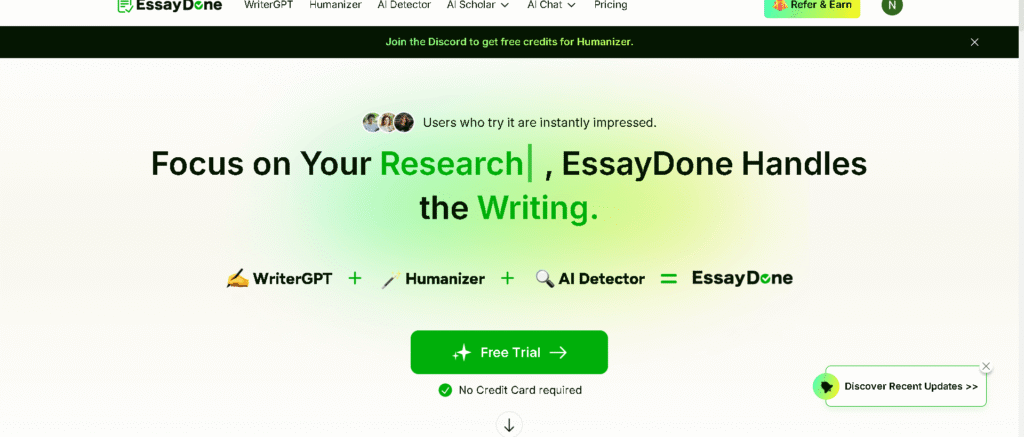
How Paraphrasing Tools Work
Paraphrasing tools ( like Quillbot) are nothing more than word replace and sentence reordering machines. These all have to do with unique-ifying the content or perhaps making it more readable, but they do not address AI-generated patterns in the least.
They do provide a degree of computer-assisted parsing via language databases and simple machine learning, mainly for the purposes of clarity and originality. Not “rocket science” but always helpful.
Synonym Replacement and Text Structure
The majority of these do no more than substitute words proposed as synonymous for another to inject some variety. For example, “quick” changes to “fast” or “important” to “crucial”.
They will also cut long sentences or move phrases around. This kind of operation can be useful for improved readability, but also tends to alter tone and eliminates nuance.
These are generally fairly simple algorithms – more dictionary than deep learning. They exert no effort to detect or “correct” AI- specific patterns, and so these perform and remain undisturbed as intended.
Speed and Efficiency
Paraphrasing tools are fast which can come in handy when you need to generate a lot of variations or quickly update older articles.
They don’t require much computer power because they mostly adhere to pre-set rules for word use and synonyms. This means you receive rapid feedback on essays, blogs, or marketing blurbs.
Where was the other side? The meaning can blur at times, especially with denser text.
Common Paraphrasing Tool Features
Common paraphrasing tools are enabled with features such as :
- Synonym databases in case of word exchanges .
- Rearranged clauses in sentence .
- Some sentences length reduction.
- Lowering plagiarism by re-wording something.
- Tone or style, such as formal, casual.
They generally lack machine learning models that will be able detect AI-produced content. They’re just sort of all-purpose writing assistants.
Comparing AI Humanizer vs Paraphrasing Tool Outputs
The end product of paraphrasing tools and AI humanizers may be AI text, but their aims are different. The are those who are better at the naturalness of the writing, those better at retaining the original context and those that are just the best at .
Readability and Engagement
AI humanizers concern themselves with making text ‘sound’ like it was written by a real person. These also de-wonkify and apply natural phrasing to, such, such that the content can be conversational. And sometimes they will even throw in a bit of irregularity here or there to make it sound a bit more authentic – readers can tell.
The goal of paraphrasing tools is literate, articulate writing. It also substitutes word choices and cleans up the grammar, but the outcome can be somewhat stiff or sterile. Probably, polished, sure, but maybe lacking that spark that keeps people interested.
Context Preservation
The AI humanizers strive to maintain the original meaning but do so by replacing or modifying words and tones to make text more human-like. The fundamental ideas remain but the wording sounds a bit less artificial-intelligent.
Paraphrasing tools purely rewrite, with a concern for clarity and exactness. They can be very helpful in the service of making complex things easy to understand, particularly in technical or academic writing. Occasionally they veer slightly off the original in order to make it flow better.
Use Cases in Content Creation
An AI humanizer is terrific for marketing, SEO blogs, or social media posts- anywhere you want a natural, relatable voice. They make your content slip by AIs and sound good to general audiences.
Paraphrasing tools cope better with academic work, research, or other professional docs, where it is important to be formal and original. They are useful and effective for avoiding plagiarism, increasing clearness, and cleaning up grammar, but not so much for tone or emotional power.
AI Detection and Bypass Effectiveness
These days, all sorts of detection tools check for AI-generated content. Whether you can slip by that depends on how closely your text resembles human writing – or if it’s only paraphrased.
Detectability of Humanized Text
AI humanizers attempt to rewrite AI content so that it doesn’t sound robotic. They tweak sentences, tone, and flow to conform to how people actually write.
The quality of these giants can be inferred from the fact that the top rated tools discredit as 0%pct.ai based on detectors like GPTZero. Humanized text does not only slightly alter the templated text, but incorporates a different vocab word and emphasizes a more natural text phrasing that are more difficult for detection programs to ascertain as being machine- generated.
But there are good and bad humanizers. There are, however, others, like Undetectable AI, who occasionally claim to get caught but really don’t. The good ones are straightforward about what they update and test – worth keeping an eye out for that.
Detectability of Paraphrased Text
Most paraphrasing tools just reword sentences in order to make them more clear, and/or to avoid accusations of plagiarism. They interchange synonyms and reorder the sentences, but there is not an actual change in the AI-generated style.
QuillBot, Grammarly, and other similar tools are among these. Paraphrased text will probably be easier to read, but it will be weeded out by AI detectors. Also, very often paraphrased content is still marked as 100% AI by some tools like GPTZero.
Polymeriation reagents would rather be used in writing than as means of concealing insidious pseudohuman AI.
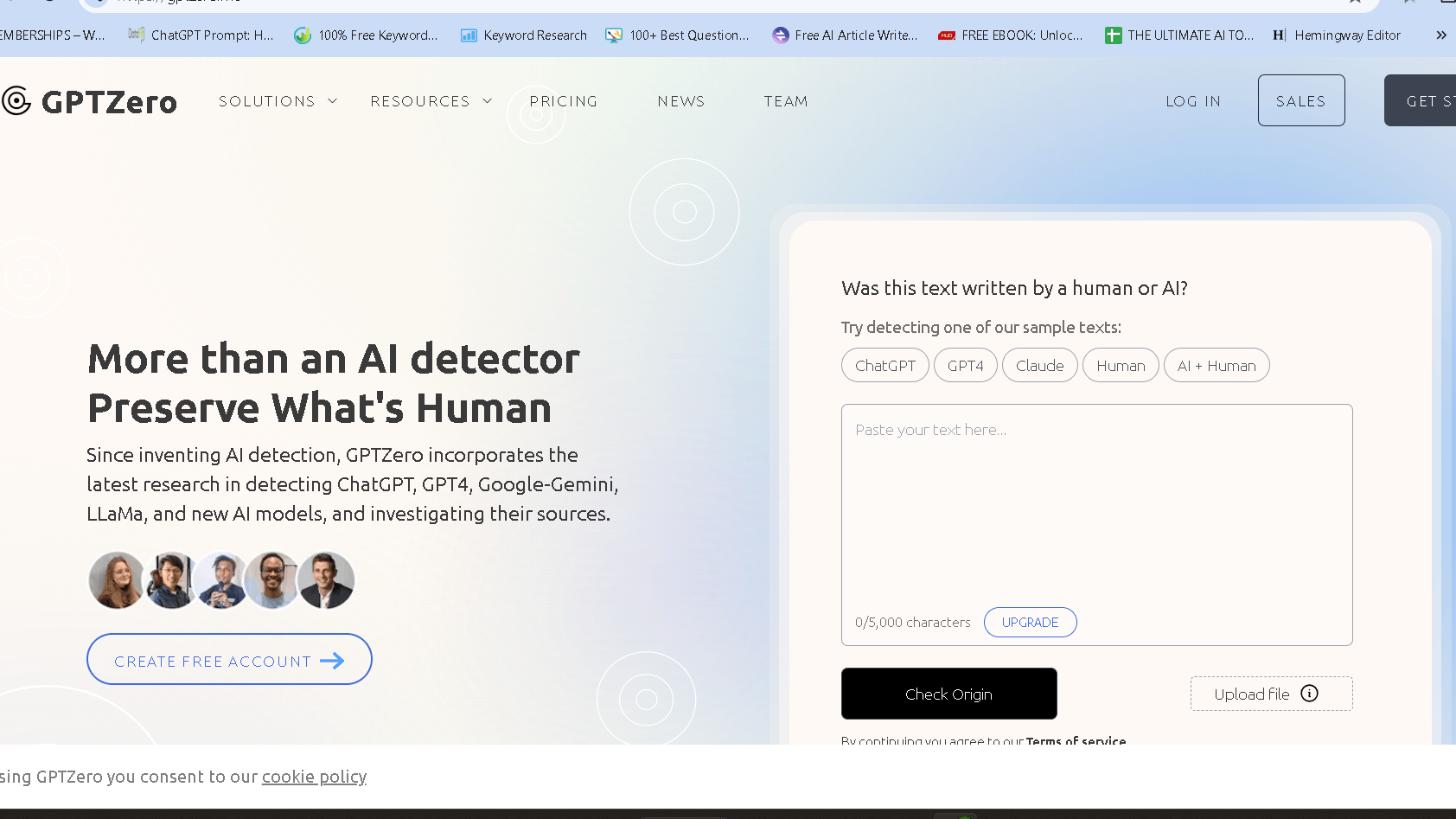
Choosing Between AI Humanizer and Paraphrasing Tool
Various tools are best at different jobs, even when you’re dealing with generated or preexisting text and AI. The best choice will vary depending on what you’re trying to achieve – either eluding AI detection, preserving meaning, or just being more clear and engaging .
When to Use an AI Humanizer
Contents that have been created as AI are better fit to AI humanizers. They alter the patterns AI detectors use, which means your text is less likely to be identified as the same as other stuff by things like Turnitin.
They do not change its meaning, but do put it in more natural and engaging English. Ideal to be used in academic contexts, marketing, or as content for SEO that has AI as its foundation.
If it contributes to readability and ‘authenticity’ I say – get an AI humanizer. It helps maintain your content sounding professional, clear, and not robotic.
When to Use a Paraphraser
A Paraphrasing tool, which takes in text and spits back out altered text; changed words, sentences in reverse order. Its specialty is in generating new versions of things that people have already written.
This makes it more readable and tweaks the tone as well dodging plagiarism. These are useful for rephrasing study and generating variations, or simplifying complex ideas.
They don’t make it an active goal to get around AI detectors, so they’re not reliable obfuscator for AI-generated text. They are best for repurposing content for different audiences.
Combining Both Approaches
You can use both, but you have to be careful. Ironically, when it comes to AI-generated text, it can actually be more difficult to humanize text that begins with a paraphraser.
Generally the AI humanizer should be applied first- get the meaning right and beat the detectors. If you must, then use a paraphraser to fine-tune the attitude or voice. There is a shade of too much, should be said.
Paraphrasers will generally do for non-AI content. The amalgamation of both tools provides more flexibility but sometimes it seems like additional work, and doesn´t provide much benefit.
Frequently Asked Questions
Here I explain the actual differences between AI humanizers and paraphrasing tools, the responses of detection software to each, and when each approach does or does not work. It also discusses which ones work the best at getting around plagiarism scans – and what you get from the free versions.
What are the key differences between a paraphrasing tool and an AI humanizer?
The goal of AI humanizers is to alter the content such that it will not be caught be AIs but again to not disturbed the meaning both of themselves and within their originating content. Paraphrasing tools are strictly word or sentence substitutes or sentence reconstructors, or rely mostly on synonyms.
Humanizers target AI detection more specifically, and paraphrasers are more concerned with general paraphrasing. For me, the point of focus is what really distinguishes them.
How can AI detection software identify the use of AI humanizers in text?
First and foremost, it is the use of pattern detection by AI that comes across in things like the rhythm, structure, and words of sentences. Humanizers are attempting to obfuscate these patterns and make everything sound more natural.
However, even sophisticated editing programs may pick up on minor clues, particularly if the variations are incomplete or haphazard. It’s actually almost, sort of, like a cat and mouse game.
What is the best AI humanizer currently available for bypassing plagiarism checks?
The most successful AI humanizers utilize specific machine learning in order to change AI writers’ behaviors. Generally, those that maintain meaning and flow and that are able to avoid detection by Turnitin, or GPTZero, or other software achieve higher scores.
The good news is that the user reviews and consumer testing (beyond the scope of this report) really do help in weeding out which solutions are best at any particular time. As new ones emerge, or old favorites are enhanced, the “best” tool can change.
How effective are AI humanizers compared to paraphrasing tools in producing original content?
The success rates of AI humanizers in evading AI detection tend to be much higher, often over 99%. Paraphrasers, however, vary between 30%-60% success, which is a wide range.
Humanizers simply use minor modifications to keep it very close to the original meaning of the text, paraphrasers at times “stray” off the path and tinker with the register.
Can AI humanizers be reliably used to avoid detection by software like Turnitin?
If utilized correctly AI humanizers can dramatically reduce the risk of being flagged by Turnitin. They are concerned with rewriting those distinctive patterns that AI image detectors love to seek out.
But these tools are not without errors and, if used without a human double-check, might produce a number of strange errors or even have you flagged. It’s wise to be careful.
What are the limitations of free AI humanizer services compared to paid versions?
Free AI humanizers are often only capable of doing basic rewriting. As a rule they have a difficult time of preserving the original meaning, and often avoid detection isn’t very feasible reliably.
The free versions, however, use less advanced algorithms. You will find they also tend score better – i.e. they tend to be more nuanced, maintain more of the original gist, and have a better chance of passing by AI detectors.
Free solutions might also throttle you in terms of usage limits or offer no real tech support. To be honest though, if you are truly interested in quality, you will notice something is missing.

